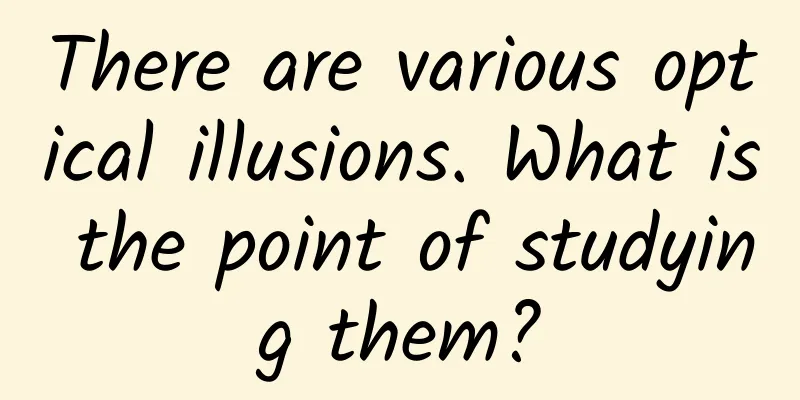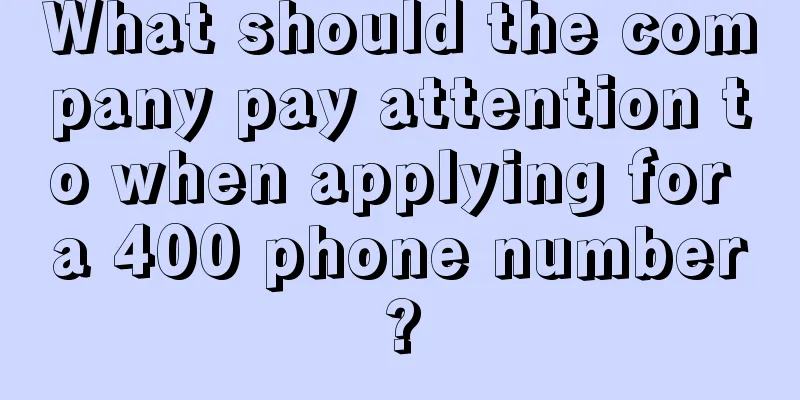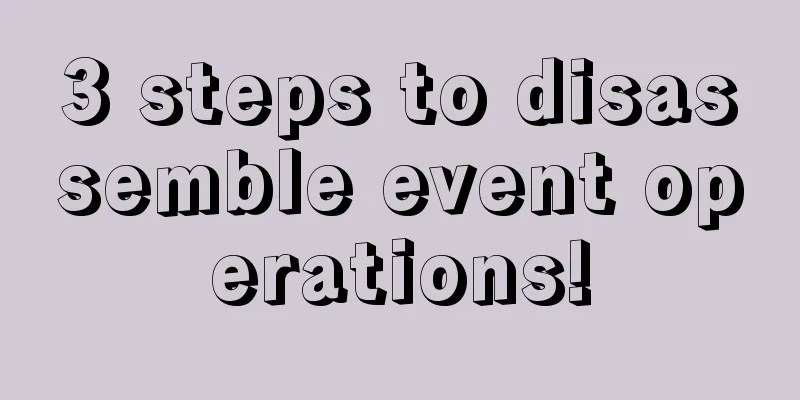There are various optical illusions. What is the point of studying them?

|
We need to study not only human illusions, but also those of animals. Written by Xu Zilong (Southeast University) A long time ago, there was a saying that misjudgment is part of football, or part of the charm of football. Of course, this saying was later refuted. FIFA could not withstand the pressure from all sides and started reforms. In 2014, the goal-line technology was first introduced in the Brazil World Cup, and the high-tech "Eagle Eye" assisted the referee in making decisions. Why are referees sometimes unreliable? Not to mention the angle problem or the lack of concentration, even if the ball passes in front of them, they can still make mistakes. If you don't believe me, take a look at the picture below: Figure 1. Flash lag effect | Source: Wikipedia When the red square moves to the center of the image, the green square flashes at the same time, but we feel that the red square has already passed by when the green square flashes. This illusion is called the "flash lag effect." To put it simply, the flash lag effect is that when a visual stimulus moves along a continuous trajectory, relative to possible sudden events (such as flashes) that may occur along this trajectory, the perceived position of the moving stimulus is earlier than the actual position (Figure 1) [1]. In football matches, when assistant referees are judging whether an attacking player is offside, they may make mistakes due to the flash lag effect [2] (Figure 2). In the offside judgment scenario, the receiving player of the attacking team is equivalent to a continuously moving red square, while the passing player's passing action is equivalent to a sudden event (green flash). The moment of passing is the time mark for the assistant referee to judge offside. Due to the flash lag effect, the assistant referee will think that the passing event is delayed, and the perceived position of the running receiving player is closer to the goal than the actual position, resulting in a flag error (FE). Figure 2. Schematic diagram of assistant referee misjudgment. ▲Offensive team player; △Position of the offensive team player perceived by the assistant referee; ●Position of the second-to-last player on the defensive team; ■Assistant referee. (Image modified from reference [2], click to see larger image) (A) Geometric diagram of on-position and offside positions. At the moment when the offensive player passes the ball, the relative position of the receiving player and the second-to-last player of the defensive team is the criterion for determining whether the player is offside. (B) Schematic diagram of the effect of flash lag on offside decisions. When the receiving player of the attacking team in the shaded area of the figure is running towards the opponent's goal, the assistant referee's perceived position (white hollow triangle) at the moment the passing teammate touches the ball is likely to be closer to the goal than his actual position (black solid triangle), resulting in a misjudgment. Obviously, understanding optical illusions can help us know that referees are innocent in some cases. In addition to the illusion of flash lag effect, which is something people try to avoid, there are also some "good" illusions that can be used to make the best of a bad situation. For example, from the perspective of vision scientists, the famous psychological projective test, the Rorschach inkblot test, can be said to be based on an optical illusion. More precisely, our brains always look for known patterns in random structures with low information content, a psychological phenomenon known as pareidolia [3]. Figure 3. Example of Rorschach inkblot test | Source: Wikipedia Of course, all the human faces on Mars, the rabbits on the moon, the devil/God in the tornado, and the Buddha statues in the sea of clouds are the result of imaginary optical illusions. From the above two examples, we can know that vision is not just a "feeling" among the "five senses" (sight, hearing, smell, taste and touch), but a "perception" that requires the brain to participate in interpretation. When the interpretation is biased, illusion occurs. Visual illusions are the best adaptations of our visual system to visual scenes. These adaptations are "hardened" in our brains and can lead to inappropriate interpretations of visual scenes. Just as medicine studies the human body from patients, psychology and neuroscience can also use visual "errors" to reveal the structure and function of the visual system and understand the mechanism of vision (human or animal). There are many optical illusions, most of which have not yet been effectively explained. We already know that brightness and contrast, motion, geometry or angle, three-dimensional interpretation (size constancy and impossible pictures), cognitive/gestalt effects, etc. can cause visual illusions. From the perspective of the mechanism of production, optical illusions can be roughly divided into three types: geometric illusions caused by the structure of the image itself, physiological illusions caused by sensory organs, and cognitive illusions caused by psychological reasons. 01 Visual illusion caused by brightness and contrast The classic "Hermann grid" is an optical illusion discovered by German physiologist Ludimar Hermann (1838-1914) in the 1870s. Scanning the white grid in the image below, you will notice that there are dim gray blocks where the white lines intersect, but if you stare directly at the intersection of the white lines, those gray blocks become lighter or disappear. Figure 4. Hermanger | Source: Wikipedia Another common similar illusion is the "scintillating grid illusion" discovered in 1994. It is often regarded as a variant of the Hermanger illusion. Figure 5. Flickering grid | Source: Wikipedia These two illusions are very similar and both involve the same process in the visual nervous system: lateral inhibition. The human eye is like a sophisticated camera. The retina at the bottom of the eye is like a photosensitive film, composed of a large number of optic nerve cells (see Figure 6). Figure 6. Retinal anatomy[4] Figure 7. Layered structure of the retina[4] When light enters the retina, it converts the light signal into nerve impulses, which are transmitted to the visual center of the cerebral cortex via the pathway of photoreceptors → bipolar cells → ganglion cells. The area where visual neurons respond to light stimulation is called the “receptive field” [4]. The receptive field of most visual neurons is divided into a central part and a peripheral part (as shown in Figure 7), which is called the "center-surround receptive field". An important characteristic of this field is that the responses of the central and peripheral parts to light are mutually antagonistic. For example, in Figure 8, the peripheral part of the receptive field (red) receiving light will inhibit the response of the central part of the receptive field (blue) to light. Figure 8. Schematic diagram of center-surround receptive field [4] For half a century, people have used the classic theory of "lateral inhibition" to explain the Hermanger illusion. Lateral inhibition, also known as lateral inhibition, means that neurons excited by stimulation will inhibit the activity of adjacent neurons. Let's take a closer look at what happens in the Hermanger illusion. Figure 9 Hermann's explanation of lateral inhibition | Source: michaelbach.de In Figure 9, we assume that the red disk represents the receptive field of a ganglion cell. When the receptive field accidentally falls on the intersection of the grid (center of the upper left disk), there are 4 bright inhibitory blocks around it, making the middle appear dim (gray); when the ganglion cell looks at the "street", there are only 2 inhibitory blocks around it (center of the lower left disk), so it will receive a higher amount of stimulation than the neuron located at the intersection of the cross, that is, it looks white. However, when we look directly at the cross, the receptive field is very small (the small red disk on the right). With such a small receptive field, it doesn’t matter whether they are at the cross or not. However, the latest research now shows that the above classic explanation may be problematic. If the grid lines are slightly twisted, the illusion disappears (right side of the figure below). This shows that the visual cortex processes information with directional selectivity, also known as neuronal directional selectivity [5]. Figure 10. The disappearance of the Hermanger illusion | Source: Bach, M. Optical illusions, 2006 02 Motion Illusion Figure 11. Motion illusion | Source: Bach, M. Optical illusions, 2006 Sometimes, a still image appears to be moving slowly, such as the disk in the image above, which appears to be rotating slowly. We still don’t fully understand the neural mechanisms of the motion illusion, but we can say that the prerequisite for this illusion is asymmetric brightness levels[6]. Obviously, each large circle in Figure 11 is composed of many radial fan-shaped strips (the fan-shaped strips are very narrow). Each fan-shaped strip contains a series of color sequences, and the repeating unit of the color sequence in the figure is "bright white-bright yellow-dark black-dark blue-bright white". Figure 12. The color sequence included in Figure 11 The key to the illusion is that the positions of the color or brightness sequences in adjacent radial sectors are staggered or offset [3]. When such an image is suddenly presented to the eye, the asymmetric brightness levels trigger the visual system's motion detectors, making the image appear to be rotating. Grouping can enhance the effect of the illusion, but color is not necessary. 03 Geometric and Perspective Illusions Figure 13. Zöllner illusion | Source: Bach, M. Optical illusions, 2006 The Zöllner illusion is another common optical illusion. In 1860, German astrophysicist Johann Karl Friedrich Zöllner discovered that parallel lines that intersect with a short line at an acute angle appear to diverge. In Figure 13, there is a series of slanted straight lines that overlap with the short lines. It looks like these lines are scattered and will soon intersect - but in fact, all nine "slanted straight lines" are parallel. Similar illusions include the Poggendorff illusion, the Hering illusion, and the combination of the Hering and Zöllner illusions (Figure 14). Figure 14. Several common geometric and angular illusions: (a) Poggendorff illusion; (b) Hering illusion; (c) combination of Hering illusion and Zorn illusion[6] Researchers believe that the Zornas illusion is caused by the angle between the short and long lines, which triggers the perception of depth. Based on the perspective principle that things are bigger when they are near and smaller when they are far away, the direction pointed by the angle between the long and short lines will make people feel that it is the "depth" of the paper; while the direction pointed by the opening of the angle feels like it is pointing to a "shallow" place. At this time, our visual system automatically adjusts again - "pulling" the two adjacent parallel long straight lines in the "depth" part "closer", and "pushing" the parallel oblique long straight lines in the "shallow" part "farther away" - to ensure the correct perception of "bigger when they are near and smaller when they are far away". But in fact, all the lines are drawn on a two-dimensional plane on the paper, and there is no depth, so it looks like the long straight lines are not parallel. 04 Size constancy mechanism Constancy is an inherent mechanism of human brain cognition. The farther an object is from us, the smaller the image on the retina becomes, but we do not think it has become smaller just because it is farther away. This is the size constancy mechanism at work. When the distance to an object is halved, the size of the image of the object doubles. The visual system multiplies the size of the projection on the retina by the assumed distance, allowing us to estimate the size of the object without being affected by geometric perspective. When distance information is invalid, our visual system resets the "default settings" and cannot correctly estimate the size of the object. For example, the "moon illusion" often used by photographers: the moon appears larger when it is close to the horizon than when it is high in the sky, because the moon is too far away from us and beyond the scope of estimation. Figure 15. Muller-Lyer illusion | Source: The Scientist The Müller-Lyer illusion, discovered by German sociologist Franz Carl Müller-Lyer in 1889, can be explained by visual constancy. In this illusion, the visual system detects depth cues - the direction of the arrows at the ends of the line segments. "Convex corners" mean closer distances, such as convex corners in a room; "concave corners" mean farther distances, such as recessed corners in a room. The visual system interprets arrows pointing inward (concave corners) as lines that are farther away from us; arrows pointing outward (convex corners) as lines that are closer to us. Next, the size constancy mechanism will make corrections to the image we observe: increase the length of the "farther" (arrows pointing inward) segments and reduce the length of the "closer" (arrows pointing outward) segments, resulting in us perceiving the upper ("farther") segments as longer than the lower ("closer") segments. 05 Gestalt Effect Figure 16. Kanisa Square[5] The Kanizsa square was first described by Italian psychologist Gaetano Kanizsa in 1955. Although the square is perceptible to everyone, its outline is an automatically generated outline of the subject by the viewer. Gestalt psychologists explain this illusion with the law of closure, one of the Gestalt laws of perceptual organization. According to this law, objects that are grouped together tend to be seen as parts of a whole. We tend to ignore the gaps and perceive the contours, which make the picture fit together. Gestalt theory states that people tend to perceive objects as complete wholes, rather than just noticing the gaps that may be contained in them. When a part of a picture is missing, our perception automatically fills in the missing part. Research suggests that the perceptual system does this in order to increase the completeness of the surrounding stimuli. Figure 17. The Impossible Trident, also known as the “Devil’s Fork” [1] In Figure 17, the upper part of the left image looks like three towers. The bottom is a curved U-shaped bar. If the lines are connected as shown in the right image, the "impossible object" appears. The extended parts of the lines are inappropriate because they transform the empty background between the towers into the bottom surface of the U. This leaves the observer with an uncanny feeling, where art and science are connected: Maurice Escher painted the famous "Ascending and Descending" only two years after Penrose published the "Impossible Staircase" painting. Can dogs have illusions? Scientists with wild imaginations have done some interesting experiments. Sarah Byosiere of La Trobe University in Australia showed dogs the Ebbinghaus-Titchener illusion, an illusion of relative size named after German psychologist Hermann Ebbinghaus and British psychologist Edward B. Titchener. Figure 18. Ebbinghaus-Titchener illusion[7] In the most classic version, two circles of the same size are placed close to each other, but one is surrounded by a larger circle and the other is surrounded by a smaller circle. When the two groups are placed side by side, we perceive the central circle surrounded by the larger circles as smaller than the circles surrounded by the smaller circles. One of the main reasons for this illusion is the size contrast effect between the central target circle and the surrounding inducing circles. So, what are the consequences of the Ebbinghaus-Titchener illusion for dogs? Byosiere's team designed a setup that allowed the dogs to express what they were feeling: a small testing room with a touch screen displaying various optical illusions that the dogs could interact with using their noses. Each dog had been trained to touch the screen with its nose to select the image in which the middle circle appeared larger. Figure 19. Test dogs’ reactions to the Ebbinghaus-Titchener illusion [8] The results of the experiment showed that dogs also experience the Ebbinghaus-Titchener illusion. But!!! Unlike humans, dogs perceive a solid circle surrounded by smaller circles as larger, while dogs perceive the exact opposite. Figure 20. Delboeuf illusion | Source: The Scientist The Delboeuf illusion (Figure 20) was created by psychophysicist Joseph Delboeuf in 1865. Two black circles of the same actual size are surrounded by rings of different sizes. Normally, to human vision, the black circle on the left appears slightly smaller than the one on the right. The distance effect is an important factor in the Delboeuf illusion. When the surrounding induction ring is close to the central target circle, the central target circle appears larger; when it is farther away, the central target circle appears smaller. As a result, we exaggerate the size of the central circle on the right because it is almost the same size as the outer rings, and underestimate the size of the central circle on the left because it is much smaller than the outer rings. What does the Delboeuf illusion look like to a dog? Christian Agrillo and his colleagues at the University of Padua in Italy tried testing the Delboeuf illusion in different dog breeds using dog food wrapped in circles (see Figure 21). Figure 21. Test dogs’ responses to the Delboeuf illusion[8] Agrillo's group gave each dog two plates of food, one meter apart. In the control group, the dogs were asked to choose between two plates of the same size but with different amounts of food; in the test group, the dogs were asked to choose between two plates of the same amount of food but with different amounts of food. Agrillo hypothesized that in either case, the dogs would choose the portion that they perceived as larger. So if the dogs also had the Delboeuf illusion, they should have chosen the smaller plate in the test group, and the pile of dog food in the small plate would have seemed larger. However, they didn't! In the control experiment, the dogs did go to the larger portion; in the test experiment, when they had to choose between the same amount of dog food on different-sized plates, "their performance was essentially random." However, the researchers said that this result is not enough to figure out whether this means that dogs are not susceptible to these optical illusions, or that the test conditions are simply not suitable for detecting it. It may also be that because the dogs in the experiment were rewarded with food no matter which one they chose, they had no motivation to choose the slightly larger portion. However, dogs and humans seem to have similar responses to certain types of visual illusions, such as the Muller-Lyer illusion mentioned above (Figure 15). A few years ago, researchers at the University of Lincoln in the UK conducted an experiment in which they had dogs interact with a touchscreen displaying the Müller-Lyer illusion. The team found that dogs trained to choose the longer line segment often chose the arrow pointing inward, just as humans tend to do when performing the same task - providing a possible conclusion that dogs and humans have the same perception of this particular illusion. But additional control experiments and detailed analysis of the data by the researchers who conducted the study suggested an alternative explanation for the findings: The dogs would not choose the inward-pointing arrow based on the perceived length of the line segment; they would choose the stimulus that was the largest overall. Interestingly, fish have also been studied for their ability to perceive visual illusions, such as the Delboeuf illusion. How fish perceive this illusion depends on the species. One study showed that damselfish react to the Delboeuf illusion similarly to humans and dolphins, while guppies react in the opposite way. Bamboo sharks generally do not make choices that are significantly above chance.[9] So, back to the ultimate question, why don't humans care not only about their own illusions, but also about those of other animals? The essence remains unchanged, and in the end, we still have to answer questions about the human brain. In cases where dogs and humans showed different responses, dogs selected the opposite stimulus from humans or showed no sensitivity at all, it may be that the dog's visual system responds differently to different kinds of visual stimuli. Humans are particularly good at perceiving global patterns in images composed of small elements. In contrast, canines may be more inclined to perceive local stimuli in those images. This may explain why dogs respond differently to the Ebbinghaus-Titchener illusion and the Delboeuf illusion than humans do—both illusions require perception on a global scale to produce the desired effect. This cross-species difference may reflect different evolutionary pressures in dogs and humans. Different species have evolved different physiological characteristics and functions to adapt to their specific environments. When the same information enters the visual system, different species may process and interpret it differently [10]. There is some evidence in the scientific literature that dogs do not have the same strong preference for global stimuli as humans, but there are only a few studies on this topic [11]. Chouinard points to another way to understand the difference in perception between dogs and humans: the extent to which an animal perceives similar stimuli as being the same as one another, rather than noticing subtle differences between them. Studies have found that dogs are less likely than humans to perceive differences between similar stimuli. 06 Future Many illusions are still not fully understood, but they provide a rich resource for subsequent experimenters and technological development. Now there are some cutting-edge technologies that use more sophisticated technical means to measure the human brain and explore the internal mechanisms of illusion formation from the perspective of cognitive neuroscience. Plato has already taught us the difference between perception and reality in his "Allegory of the Cave". It is very likely that we will never be able to turn around and see the true reality, but we can do our best to understand it. Fortunately, we can both understand the mystery of vision through illusions and appreciate and enjoy the beauty of art they bring us. References [1] Bach, M. Optical illusions, 2006 [2] MVC Baldo, RD Ranvaud, and E. Morya, “Flag errors in soccer games: the flash-lag effect brought to real life,” Perception, vol. 31, no. 10, Art. no. 10, 2002. [3] https://en.wikipedia.org/wiki/Pareidolia [4] Mark F. Bea, Barry W. Connors, Michael A. Paradiso, translated by Wang Jianjun. Neuroscience Exploring the Brain. Higher Education Press. 2004 [5] DM Eagleman, “Visual illusions and neurobiology,” Nature Reviews Neuroscience, vol. 2, no. 12, Art. no. 12, 2001. [6] https://michaelbach.de/ot/ [7] B. Roberts, MG Harris, and TA Yates, “The roles of inducer size and distance in the Ebbinghaus illusion (Titchener circles),” Perception, vol. 34, no. 7, Art. no. 7, 2005. [8] https://www.the-scientist.com/infographics/infographic-what-do-dogs-perceive-68288 [9] https://www.verywellmind.com/optical-illusions-4020333 [10] S.-E. Byosiere, PA Chouinard, TJ Howell, and PC Bennett, “What do dogs (Canis familiaris) see? A review of vision in dogs and implications for cognition research,” Psychonomic bulletin & review, vol. 25, no. 5, Art. no. 5, 2018. [11] E. Pitteri, P. Mongillo, P. Carnier, and L. Marinelli, “Hierarchical stimulus processing by dogs (Canis familiaris),” Animal Cognition, vol. 17, no. 4, Art. no. 4, 2014. |
>>: Quantum interference makes counting stars easier
Recommend
How to use the 4 key points of the addiction model to design a community with high conversion rates?
Recently, I read a book called "Addiction&qu...
How to plan a promotional event that will attract a lot of people’s participation? Just read this one
This article introduces four strategies for plann...
Which servers are generally used for live streaming?
Which servers are generally used by live streamin...
Reasons for office workers to take temporary leave in the morning
1. Feeling unwell: This is the most common reason...
How to buy the Kuaishou popularity agreement, or where to buy popularity?
Professional Douyin and Kuaishou likes-boosting p...
Analysis of the mechanism of TikTok addiction
Nowadays, Tik Tok has become an indispensable for...
What is the reason why the website opens slowly? How to make the website open faster?
The speed at which a website opens is directly re...
Who will win in the war between WeChat and mobile phone manufacturers?
Recently, ten mobile phone manufacturers includin...
How to avoid fragile code
[[165073]] The most common problem with legacy co...
"Chang'e" connects the earth and the moon, and shares the beauty of the moon thousands of miles away - scientific achievements of my country's lunar exploration project
"When will the bright moon appear? I raise m...
Alipay has made the right move by entering the social networking market through social networking
For Alipay , it is neither trying to build a comm...
These reasons make people addicted to games
[[144044]] The success of any business is insepar...
Analysis of mainstream [information flow advertising] channels, the war is about to break out!
The information entrance of mobile Internet has c...
How to promote the mini program after it is developed by the mini program development company?
1. Search ranking There are many factors that aff...
Review: Sharing of event operation planning process
Operational activities are one of the common meth...









